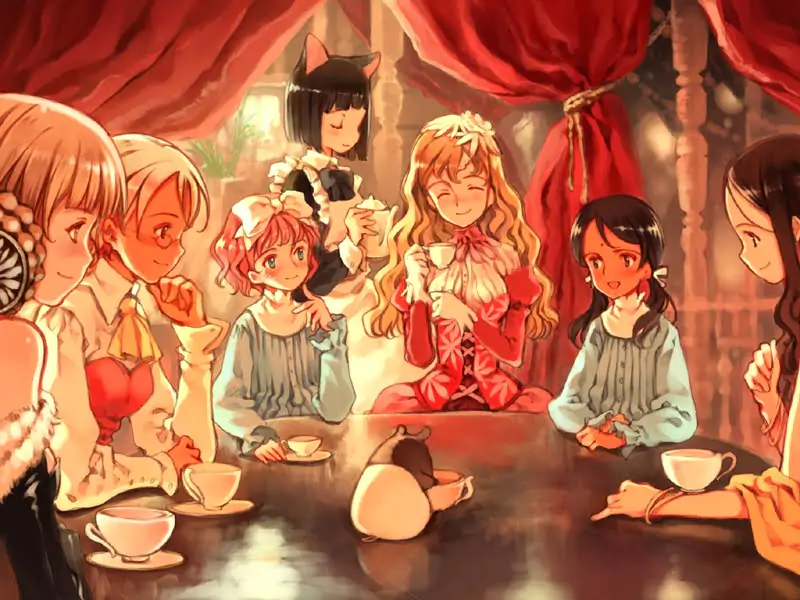It’s time for my Littlewitch Romanesque review! Now according to The Visual Novel Database (https://vndb.org), the Editio Perfecta version of the game was released in Japan on July 27, 2008, as an 18+ visual novel. 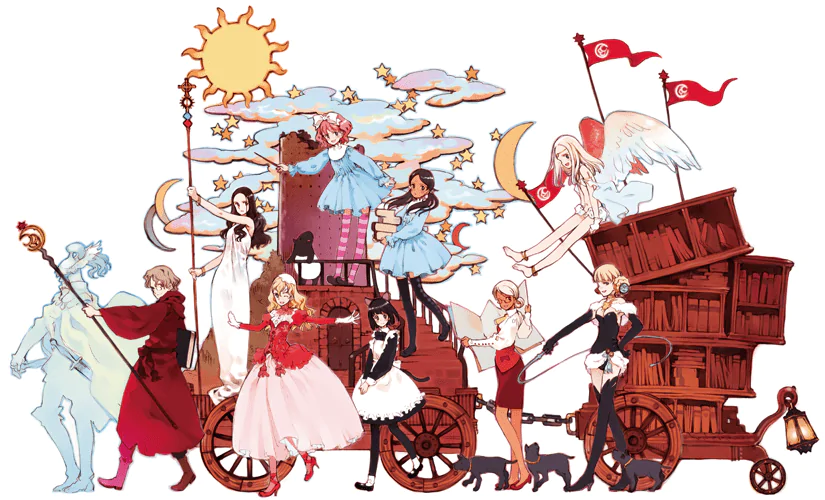 It includes the fully voiced Aria to Kaya to Kuro no Tou, not found in the original Shoujo Mahou Gaku Little Witch Romanesque released on February 22, 2007. The game’s two-part title translates to “Magical Girls’ School Little Witch Romanesque”; “Aria, Kaya, and the Dark Tower”.
It includes the fully voiced Aria to Kaya to Kuro no Tou, not found in the original Shoujo Mahou Gaku Little Witch Romanesque released on February 22, 2007. The game’s two-part title translates to “Magical Girls’ School Little Witch Romanesque”; “Aria, Kaya, and the Dark Tower”.
This review is based on JAST USA‘s (http://www.jastusa.com) translation of Editio Perfecta, released on December 22, 2014. An “All-Ages” version is coming soon. You may purchase it on Steam, or search J-List (http://www.jlist.com)
~
Towers are symbols of Arch-mages and power. A thousand years ago, this vast and magical world used to be filled with them!
Today, however, only a few towers remain from that time when Mages held god-like powers.
Presently, Mages sit rich in the capital with their minds focused on status, rather than exploring the arts of magic. Standing apart however is Domino, the youngest of the world’s nine powerful Arch-mages, and our story’s Hero!
Domino is exiled into the ruins of the Dark Tower after speaking against his fellow Arch-mages. His mission is to teach magic; not to just any students, but the two WORST at the Magical Academy! They are Kaya Xavier and Aria Vancleef. Will you succeed in guiding them to the level of “Master Witch” within the designated three-year deadline?
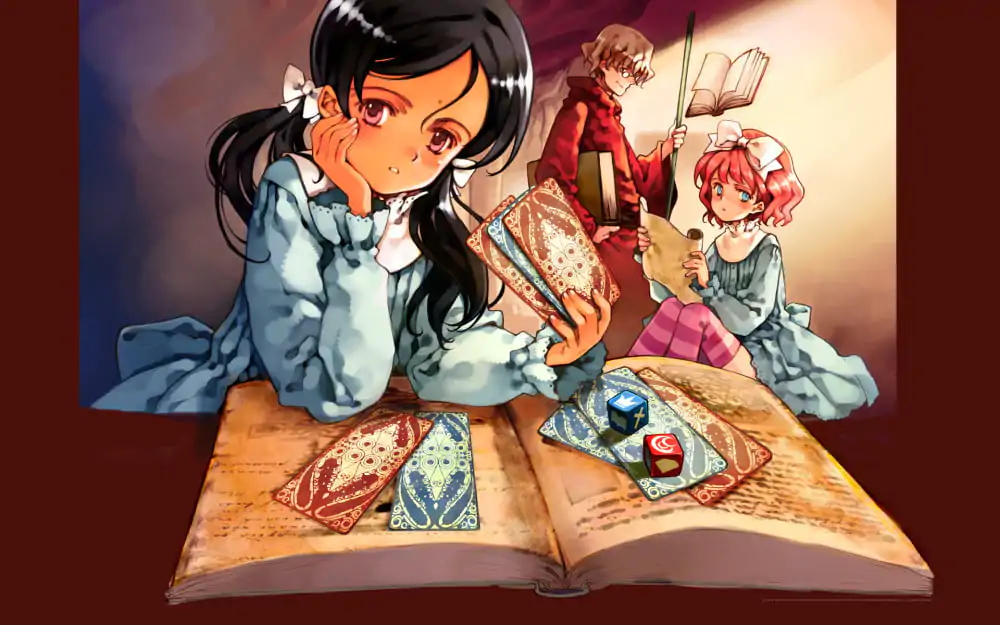 Artwork by Oyari Ashito
Artwork by Oyari Ashito
Our dark beauty to the left is Kaya, a polite and mature young lady with a strong sense of responsibility. The pink-headed sweetheart to our right is Aria, a gutsy tomboy who loves a little mischief now and then. A cute duo, indeed!
In the original Romanesque, the girls appear to be in their early to mid-teens. Their palatable ecchi places them firmly in the lolicon genre, according to some. But in Editio Perfecta, Kaya and Aria meet the 18+ requirements, and so are drawn instead as off-to-college types. This also complies with scenes of Domino cavorting with a variety of harem ladies, which we will examine later.
How your students grow in their quest to become master witches affects the outcome of your game. Progress is achieved by completing main adventure quests, as well as a host of mini-games. You will use dice in various combinations to gain Spirit Points (XP). These points can be spent as tuition to help you advance through your lessons, which are depicted as a map of spells. For each spell learned, you receive a Tarot-like card featuring unique artwork and in-game abilities.
Each quest will require a different combination of spells, and reward you with special cut-scenes to drive the story. Beware, these scenes do contain a modicum of ecchi, bordering at times on actual hentai. But remember, this game IS a visual novel after all. So let’s check out the rest of our cast and story!
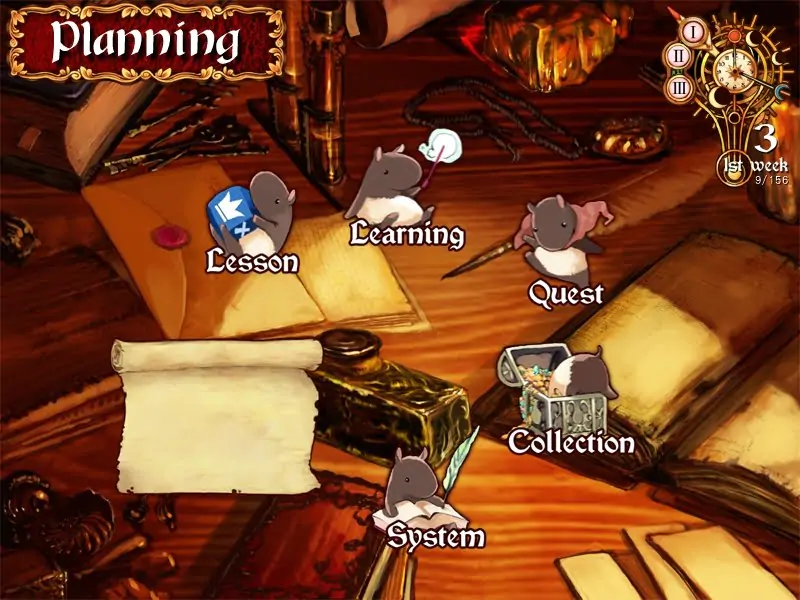
Ingame Planning Screen with the mascot, Toopy
Upon entering the Dark Tower, Domino discovers a small, mysterious creature.
It appears similar to a mouse..hamster..perhaps a magical guinea pig?!
Intrigued, Domino reaches out to touch what he calls a “cute Golem”, only to be disappointed when Kaya points out how the fur ball fell down through a crack in the roof (poor baby)! Eventually, they call him Toopy and he joins the party, remaining loyal to Domino and rarely leaving his side. Toopy appears as a small mascot; accompanying you throughout the game.
The following image depicts the game’s opening scene. It sets the mysterious mood of magic right away, as Domino opens the Tower with a glowing key. This is followed by torches in a corridor, which in turn leads to a huge room within the Tower’s ruins. While these scenes are designed primarily to invoke players’ curiosity, they never forget about that nominal dose of aforementioned fan service! Overall, not bad…the translations are fairly accurate and the original Japanese jokes stay true to form, thanks to the remarkable seiyū talent.
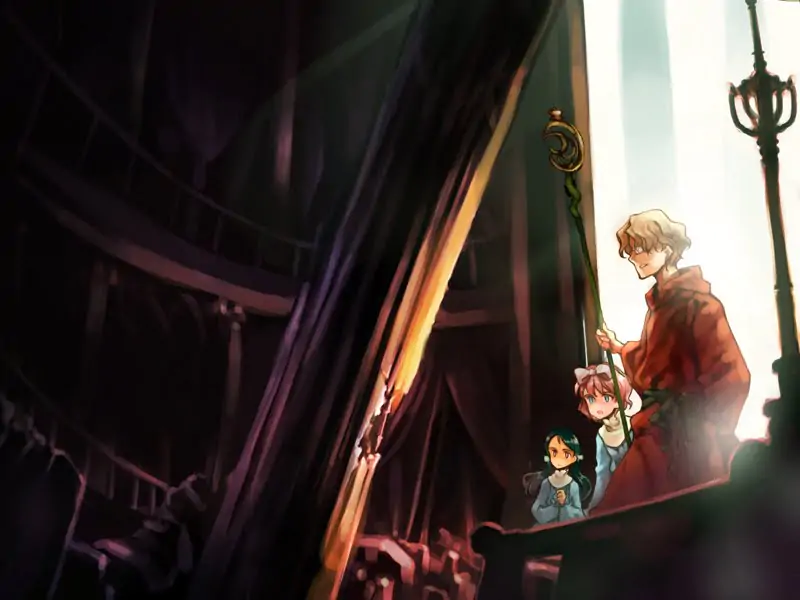
Artwork by Oyari Ashito
Now let’s face it, Toopy is adorable and deserved more screen time! I didn’t realize until quite a bit into the game that he could talk, thinking that Aria was simply using baby language (as many characters do toward animals) to an otherwise mute guinea pig. Turns out, Poké-Speak applies for Toopy, which in general consists of various ways of saying his name. Even so, that adds cute points in my Otaku opinion! “Toopy plushie, anyone?” Much needed!
Further, into the Tower, we meet the ghost Mauresumo. With a personality reminiscent of a cheeky grandpa, he will later take on the role of teacher for Kaya and Aria. This brings up an interesting point. When you open the game’s planning screen, you can change teachers on the fly. Each specializes in a different brand of magic training. It’s actually quite fascinating to explore the complex yet tidy game design!
As for our Harem beside Kaya and Aria…some are more stereotypical than others, but I dare say all their “teacups” will be filled to the brim in this game!
In a deeply hidden room of the Tower hides Sepha, a loyal and pure angel, and Domino’s childhood friend. Then there is the gorgeous architect Mariella Grandback, daughter of Merchant Grandback, who pays a visit to renovate the Tower. She builds a library and eventually a bedroom for the spoiled and busty Princess Fianna Mellowa, who unexpectedly arrives with her timid Neko-Maid Tillett. The adorably humble Saint Olga crashes the party on a giant pink bird, followed by her watchful guard Rosetta. Confident Bounty Hunter Olivia joins in with her exceptional fighting skills and many dogs! Shameless Fairy Constantine pops up from nowhere and Merrett the Elf shows up with many other characters along the way.
As you can see, the game’s cast offers quite a scope of personalities! Love them or not, there’s no denying that much time was put into their development. They are memorable; each with their dominant trait and their seiyū operators do a great job bringing them to life!
The story itself revolves mostly around Kaya and Aria; watching them grow and steadily learn to handle each quest. You’ll smile, laugh out loud, and sometimes face-palm at their antics. While interpreting the game’s subtle innuendos, some players may feel part of their innocence slipping away…welcome to the Internet!
The game’s artwork is stunning, both the scenery and the characters themselves. The musical compositions are marvelous as well, considering this a VISUAL novel. If you have the time, I suggest checking out the soundtracks and vocal albums.
All in all, Little Witch Romanesque is a lovely brew of blended teas to be strongly enjoyed!
Despite it belonging to what manga fans call the “harem genre”, I must say that I didn’t feel the ecchi was forced down my throat. I associated with each character based on merit and how they progressed throughout the game. That’s not to say fan service was in short supply…it truly served it’s purpose! Especially so when combined with dedicated seiyū, who make you believe in their characters. Kampai!
Please note: The mechanics of spirit dice, spell lessons, and story quests will prove to be more complex than in typical graphic novel games. But along with the musical score (which I later catch myself humming in public…whoops…) Romanesque is fresh and fun!
It’s quite obvious I’m greatly enjoying Little Witch Romanesque, but how do I rate the game when all is said and done?
I’m an autistic gamer with ADHD, studying Business Administration at the University of the People while learning game development. For over 10 years, I’ve reviewed games, collaborated on projects at global game jams, and attended industry conferences. I love growing with others through our shared passion. Always learning, always pushing forward — sometimes you just have to do something crazy.

